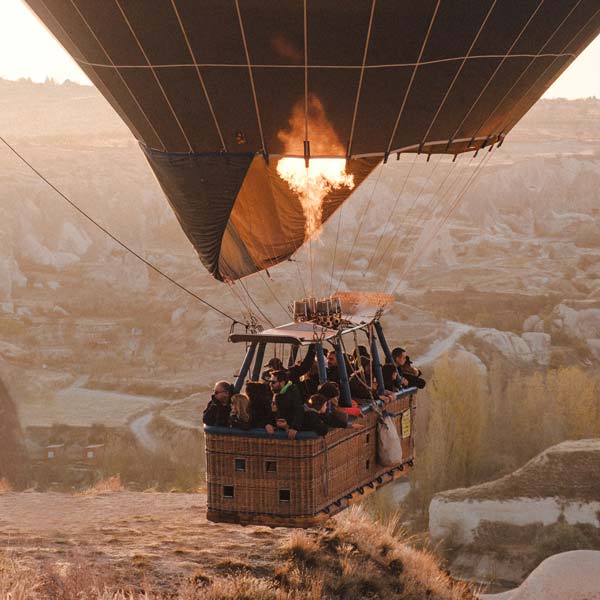Cappadocia is a land that has grown in popularity in recent years, but not many people are aware of its history, cultural significance, or what makes it unique; so if you’re wondering what Cappadocia is known for, then it’s time to find out.
Contrary to what most people believe, Cappadocia is not a place, but a region in central Anatolia of Turkey, made up of several towns and villages and connected by valleys. The region is actually quite historic, but travelers might only know about it for its landscapes and the epic hot air balloons that dominate social media feeds.
Besides the sunrise hot air balloons, Cappadocia is known for its surreal desert landscapes made up of fairy chimneys, a unique rock formation quintessential of the region, as well as ancient underground cities, cave hotels, and rock-carved dwellings.
Travelers to Cappadocia can find historic rock-cut churches, monasteries, and various cave dwellings that troglodytes once used to call home. But there is more than this, there are so many things Cappadocia is famous for!
That is why we have decided to write this guide on the things that Cappadocia is most famous for, so you can learn more about the region and have the perfect idea of what to expect in this iconic destination!
Planning a trip to Cappadocia last-minute?
Make sure you book your tours, places to stay, and airport transfers ahead of time to ensure availability!
Here is our recommended airport transfer in Cappadocia:
- Airport Shuttle From Nevsehir Airport (NAV) or Kayseri Airport (ASR) (Super affordable!)
Here are our recommended tours in Cappadocia:
- Hot Air Balloon Flight In Cappadocia At Sunrise (A must-do In Cappadocia)
- ATV Tours At Sunset
- Green Tour In Cappadocia (Perfect for those not renting a car!)
Here are our recommended places to stay in Cappadocia:
- Koza Cave Hotel (Amazing views and great photo opportunities)
- Museum Hotel (Most luxurious hotel in Cappadocia)
- Kamelya Cave Hostel (Budget hostel with cave rooms!)
What Is Cappadocia Known For?
1. Hot Air Balloons At Sunrise
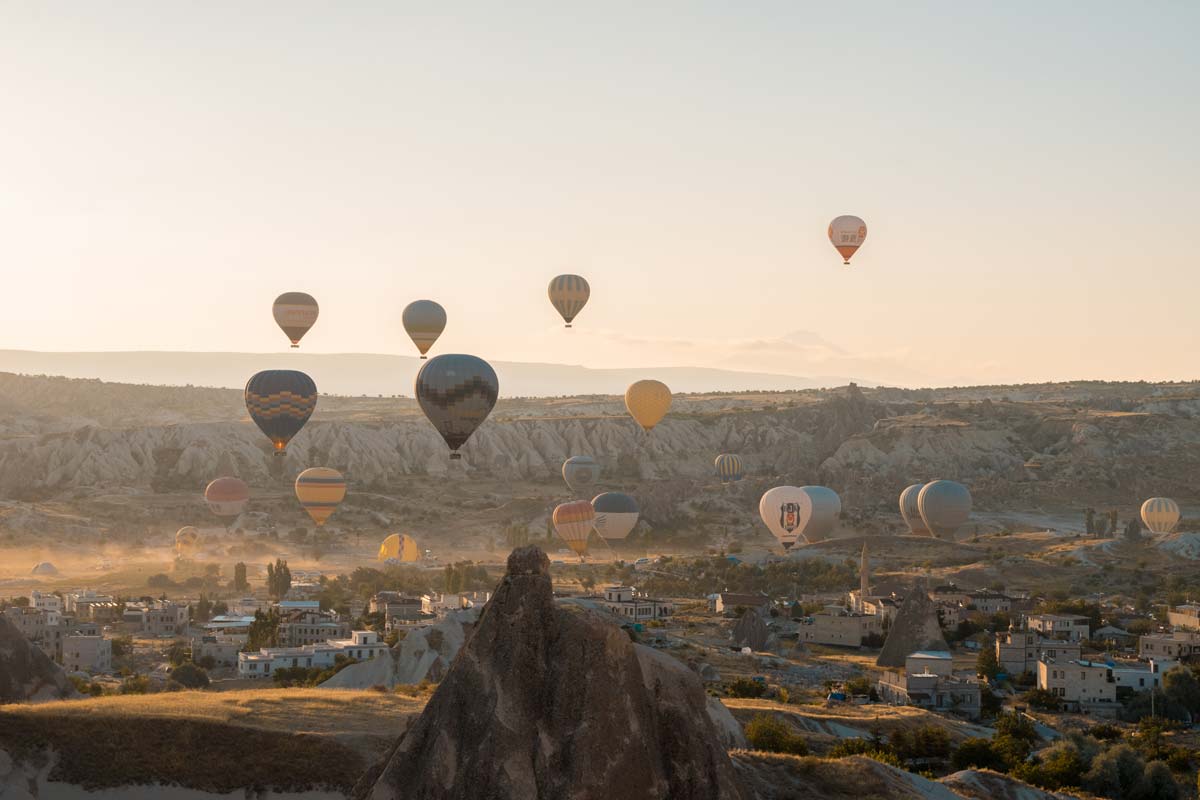
Without a doubt, the most popular thing to do in Cappadocia is to take a hot air balloon at sunrise. The experience is unlike any other, as you get to admire the beautiful desert landscapes and get a scale of the entire valley.
You will get unparalleled views of the fairy chimneys and rock formations that make this place so unique. Combined with the morning glow of a sunrise, it is almost like you are in a fairytale. Plus the feeling of floating through the sky in the peace and silence of the early morning is quite surreal.
There are many companies that offer hot air balloon rides in Cappadocia, but not all of them are good. For your own safety and enjoyment, we recommend going with a reputable company such as Royal Balloons. They have pilots with numerous years of experience that not only ensure your safety but can give you a good introduction to the region!
It’s also important to note that hot air balloons can only fly in optimal conditions, and so they don’t fly every day. The best conditions are in the months of April, September and October, but you can learn more about how to time your trip for hot air balloons in our guide on the best time to visit Cappadocia by month and season.
2. Surreal Desert Landscapes

The region of Cappadocia is known for its stunning desert landscapes that many compare to Mars. While we are not sure how accurate that statement is, we have to agree that the rock sites of Cappadocia are certainly unique and unlike any other place we have been to.
The landscape is made up of huge tufts of volcanic rock. These tall rock pillars are made of volcanic tuff rock and sculpted by the erosion of rain and wind over many years, giving them a unique column-like shape.
The best way to explore the desert landscapes of Cappadocia is through one of its many hiking trails. These trails lead you up close and personal to some of the coolest fairy chimneys (such as the phallic ones in Love Valley), and all the numerous abandoned cave dwellings and churches in the region. It is literally a playground for adults!
Many of these valleys make up Göreme National Park, a 9,572 hectacre site with protected rock formations and a UNESCO World Heritage Site.
3. Unworldly Fairy Chimneys
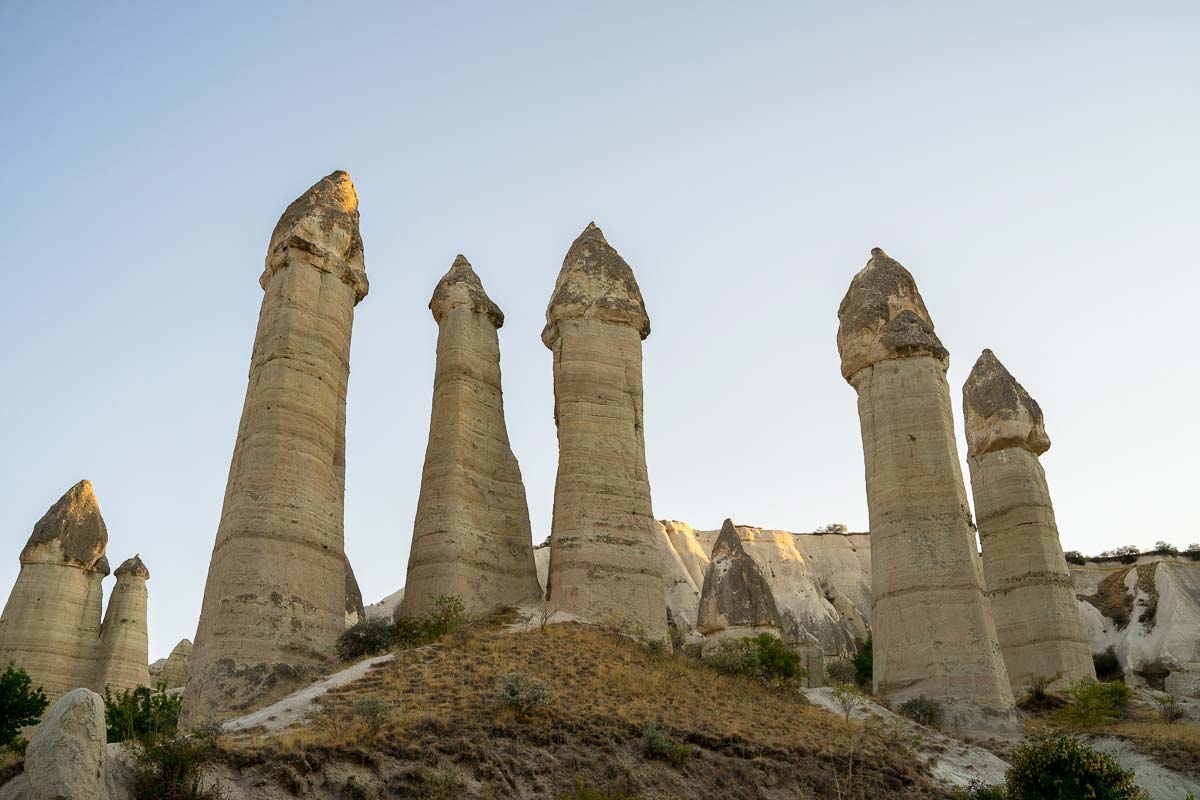
One of the most iconic features of Cappadocia is its epic fairy chimneys. The landscape is dotted with what’s known as fairy chimneys, a name given to the unique rock formations that were formed by volcanic eruptions, and then carved into by ancient civilizations to use as homes, storage, and protection against invaders.
They come in all sorts of different shapes and sizes, and you’d expect them to look like a regular rock pillar, but they are so much more than that.
For example, in Devrent Valley, which is also called the Imagination Valley, you’ll find fairy chimneys that resemble some of the most random things. Some might require a bit of imagination to see, hence the name, but the camel rock at the entrance is undebatable.
In Monks Valley (Pasabag Valley), travelers will find double and even triple mushroom-capped fairy chimneys that people once lived in. No two fairy chimneys in Cappadocia are exactly the same.
A great place to admire the fairy chimneys and to learn more about how these rock formations were used as dwellings, is to visit Göreme Open-Air Museum, or Zelve Open Air Museum, which are the two museums where you can wander around the former villages of ancient civilizations and see ancient churches, homes, stables, and more.
4. Ancient Underground Cities
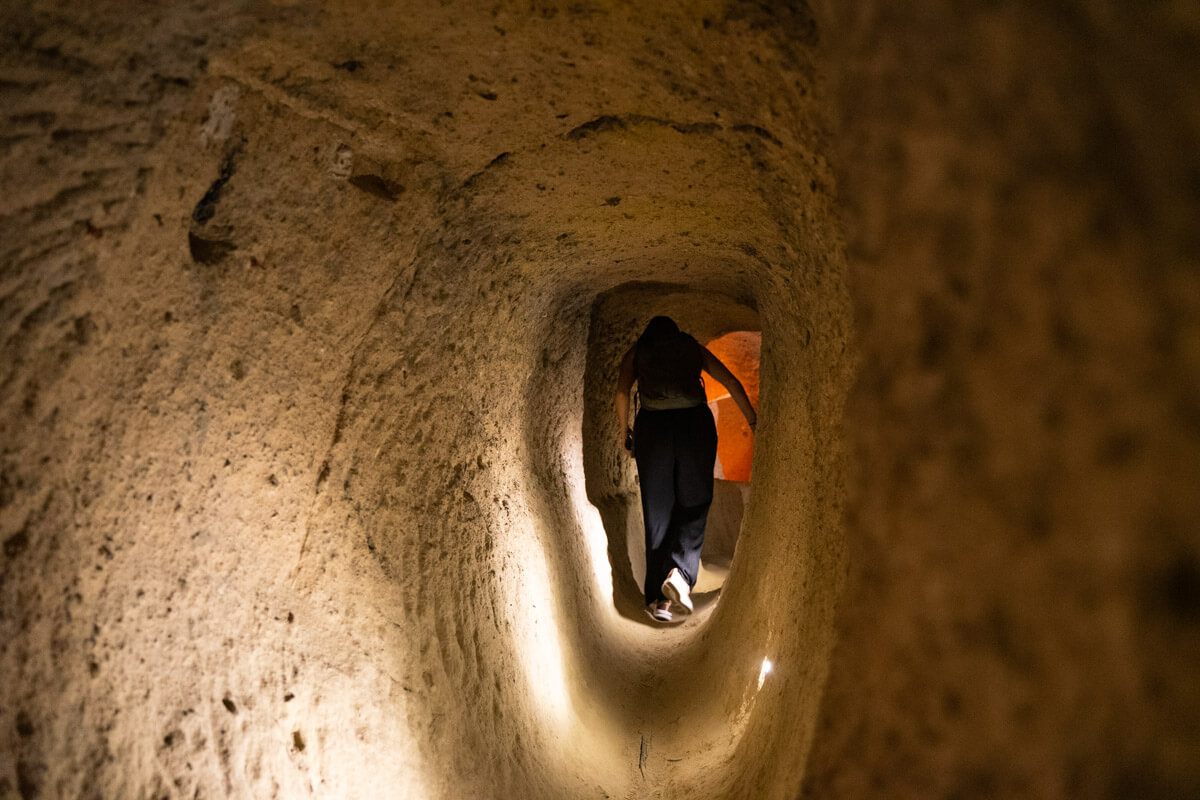
If you think what’s above ground in Cappadocia is amazing, wait till you see the underground cities! Archaeologists estimate that there are over 200 underground cities in the region of Cappadocia, and some even held over 20,000 people at one point in time!
The two most famous ones are Derinkuyu and Kaymakli Underground City, both dating back to around 6th century bc, at the time of the hittites, who created them to protect themselves from the Byzantine invaders.
The biggest one (in the world) is Derinkuyu Underground City. It is estimated that the city extends to 85 meters below ground, and is capable of accommodating 20,000 people plus their livestock and food source. There are a total of 18 levels, which are connected through a series of tunnels. Talk about an epic engineering achievement.
Many of these underground cities are built thousands of years ago, which is even more impressive. They’ve been used by a number of people that settled in the region, mostly for the purpose of protection and shelter. Some underground cities had a massive rolling stone door that blocked off all invaders!
5. Historic Cave Churches
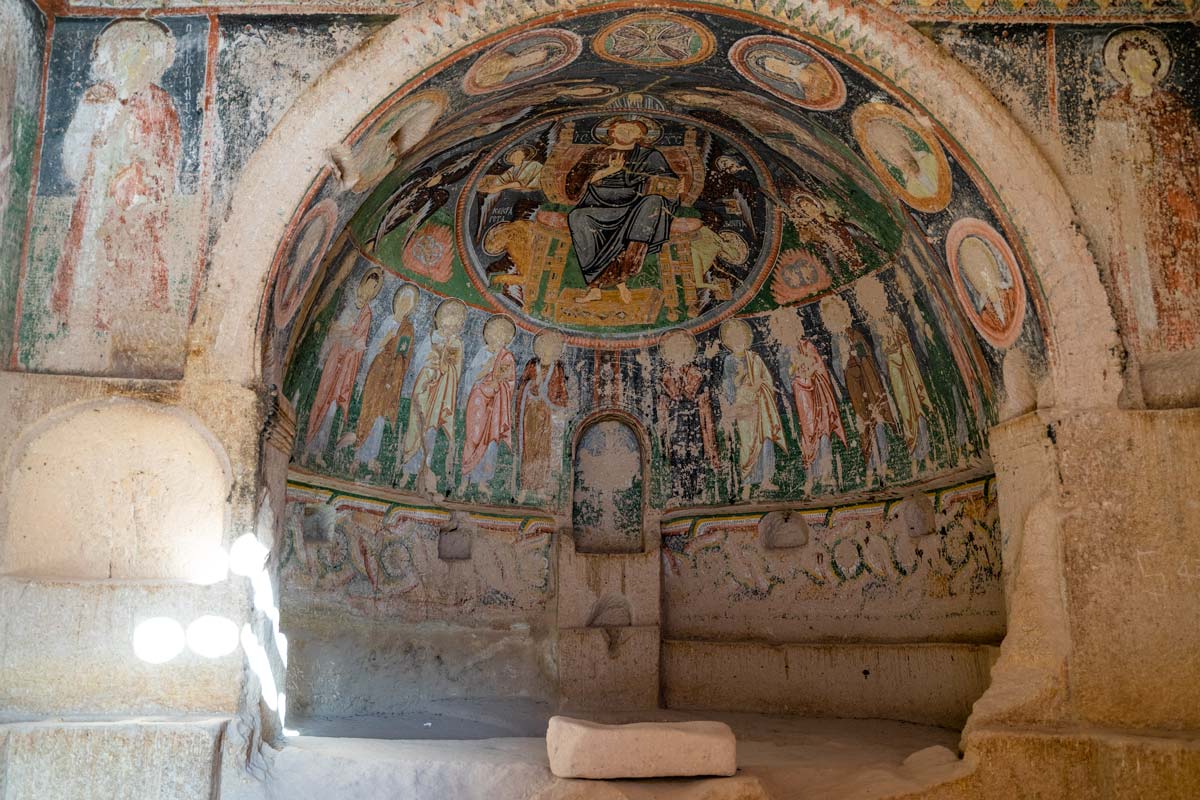
Because the region of Cappadocia was settled by the Byzantine Christians, they built hundreds of cave churches in the area. Many of these cave churches had fresco paintings that depicted scenes from the Bible, and some can still be seen today.
The most famous of which is the Dark Church in the Goreme Open-Air Museum. It is one of the best preserved cave churches in Cappadocia, with vibrant frescoes and vaulted ceilings. Another one that is worth checking out is the Crusader Church in Rose Valley. However, that one is not as well-preserved.
But perhaps what’s so great about these cave churches is that you can go hiking in one of the valleys in Cappadocia and end up stumbling upon some. While some might not have beautiful frescoes as you would find in one of the museums in Cappadocia, they are impressive nonetheless.
6. Iconic Cave Hotels and Dwellings
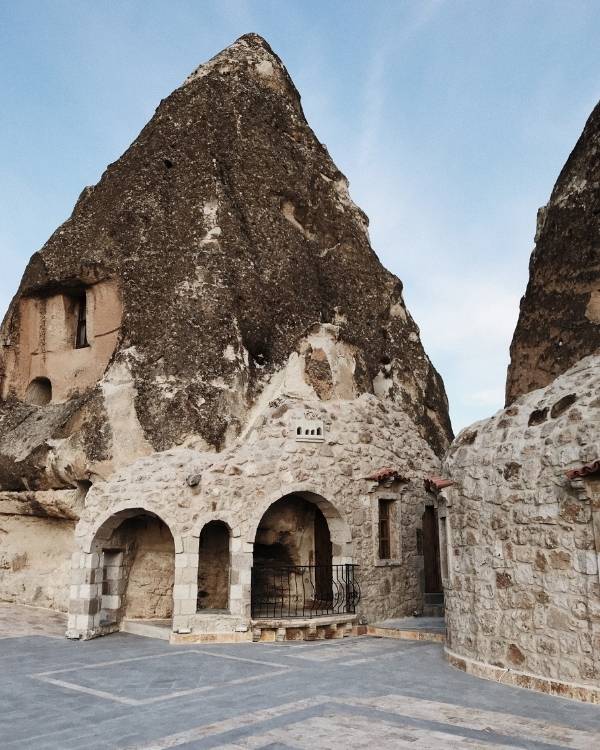
Because of the soft volcanic rocks of Cappadocia, ancient settlers were able to carve out the rock and create dwellings for themselves. These cave dwellings were actually quite nice, as they not only provided protection from the elements, but they also kept the troglodytes cold in the summer and warm in the winters.
While there are no more people living in remote caves nowadays, cave hotels in Cappadocia have become a popular attraction for tourists. Visitors can experience the historical way of life and stay in one of the many cave hotels in the region.
These cave hotels are far from rustic, and most have modern luxuries such as free WiFi, beautiful interior decor, furnished bathrooms, and more! Some properties even come with a swimming pool to help you with the heat in Cappadocia.
7. Delicious Wine
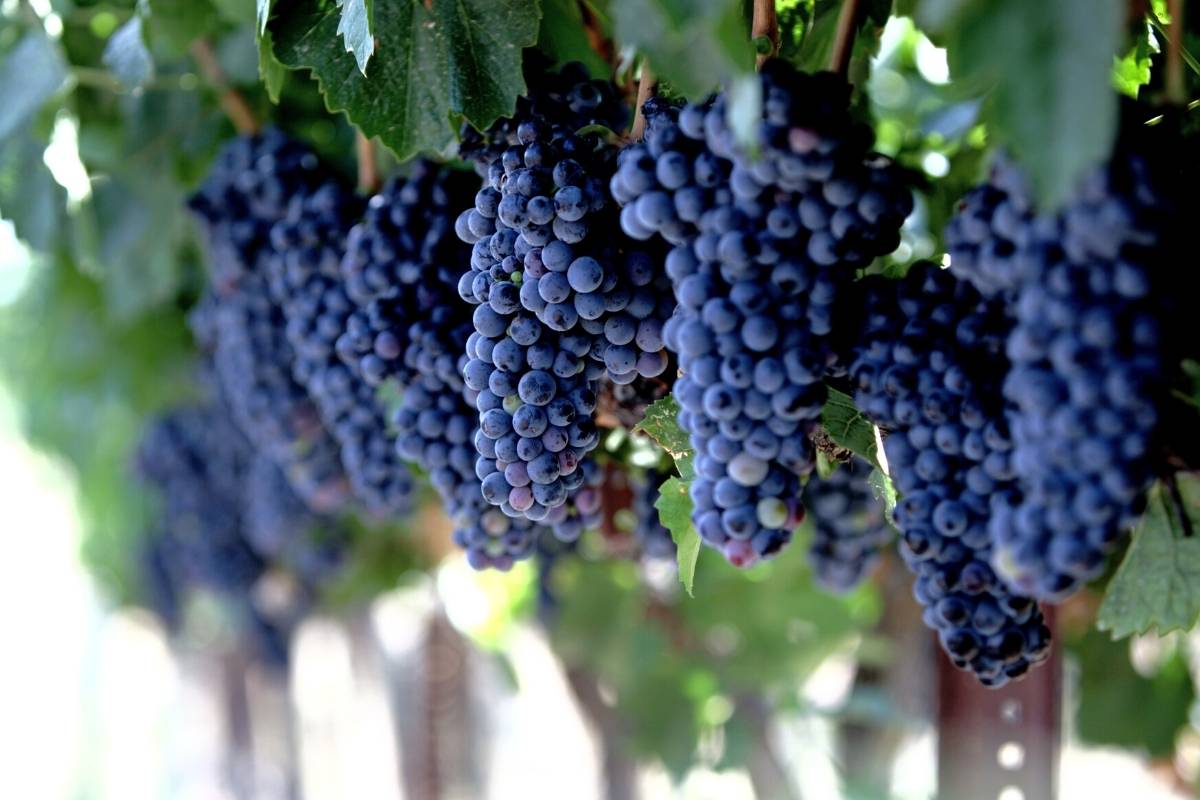
Cappadocia is known for producing high-quality wine. In fact, the art of wine-making is a tradition in Cappadocia and has been passed down from generation to generation. Historically, this region of the world is believed to be the birthplace of wine, as far back as 10,000 years ago.
However, because Turkey is a Muslim country, alcohol and wine are forbidden, which is why the wine in Cappadocia is not as well-known as some of its other attractions. There have been a few award-winning wines from the Central Anatolian region (where Cappadocia is located), and even the cheap wines are good.
Part of the tradition of wine-making here is the use of pigeon droppings to fertilize the soil. That is why travelers will see plenty of pigeon houses (dovecotes) in Cappadocia, especially in the Pigeon Valley. These houses were built to capture the pigeon droppings!
8. Testi Kebab
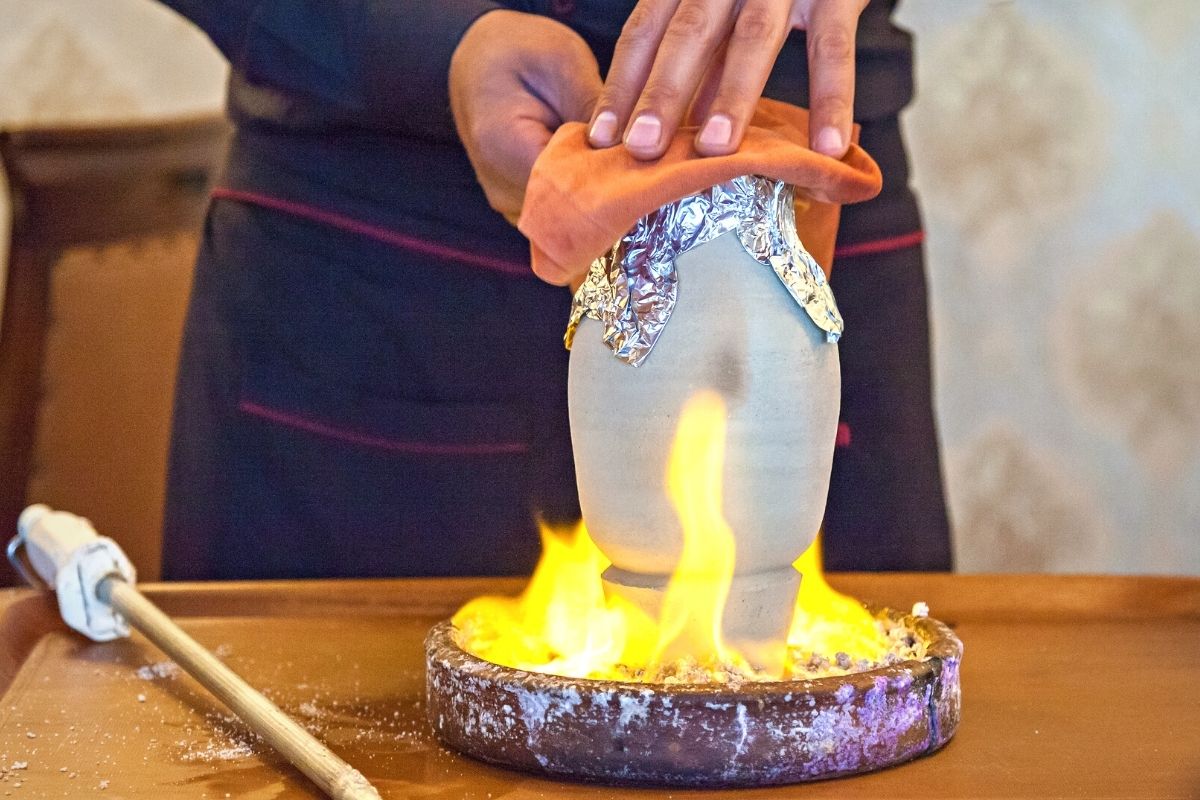
Cappadocia is also renowned for its unique culinary specialty known as testi kebab, a dish that was founded in this region. The testi kebab is unique in its distinctive preparation method.
The name “testi” refers to the clay pot in which the kebab is slowly cooked. The pot is then placed in a wood-fired oven or buried in hot embers, allowing the ingredients to slow-cook and develop deep flavors. The traditional vessel is stuffed with meat (usually lamb), vegetables, and aromatic spices, and sealed with bread, then broken onto the plate in front of the diner – it is a tradition that has been used for centuries in the region.
What makes testi kebab unique is not only its cooking method but also the theatrical presentation. It’s believed the method of cracking the pot on the plate preserves the moisture and tenderness of the meat while infusing it with the flavors of the spices and vegetables, right up until it’s time to eat it.
9. Horseback Riding
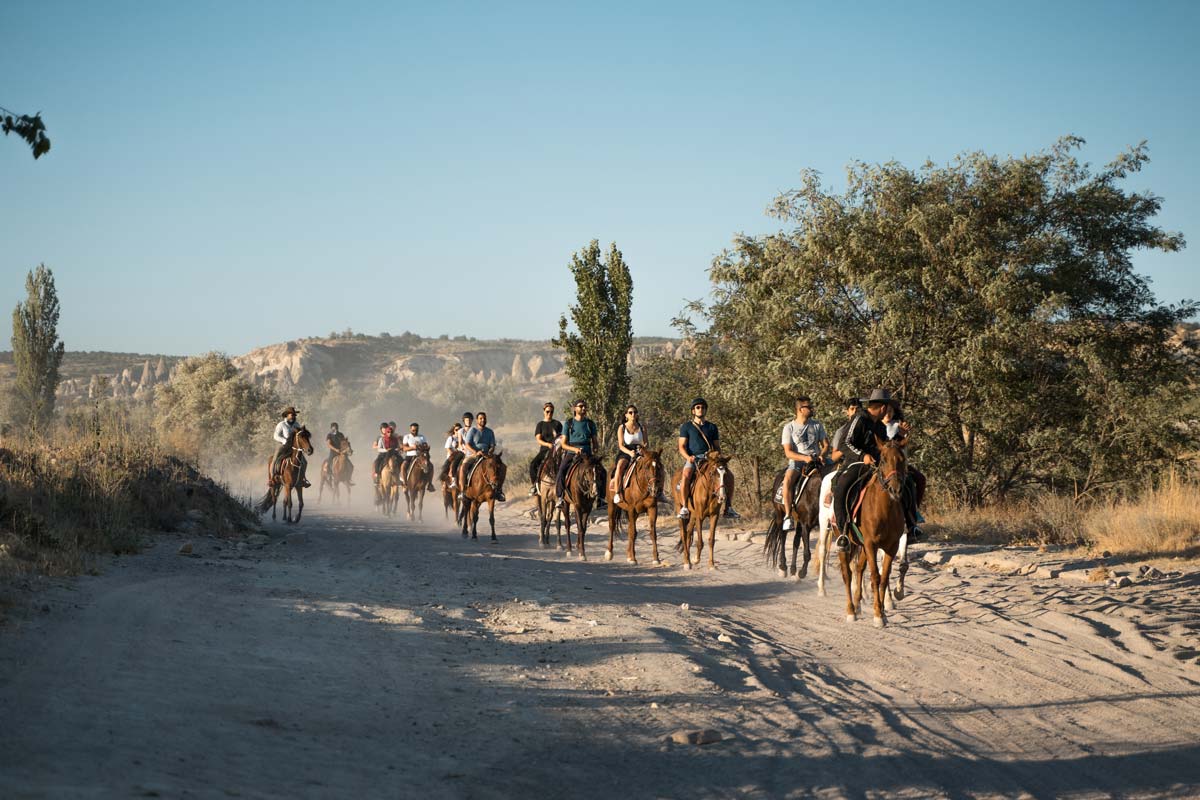
Another great way to explore Cappadocia without hiking is by horseback riding. This has been a popular way to explore the stunning landscapes for centuries.
Cappadocia has a deep-rooted equestrian culture that has flourished in the region for centuries. Cappadocia has been inhabited by various civilizations, including the Hittites, Persians, and Byzantines, all of whom utilized horses for transportation, agriculture, and warfare.
The unique topography of Cappadocia, characterized by its fairy chimneys, valleys, and ancient rock formations, is not possible to see by standard vehicles, so horseback riding adventures is one of the most popular ways to get up close to the formations.
10. ATV Experiences
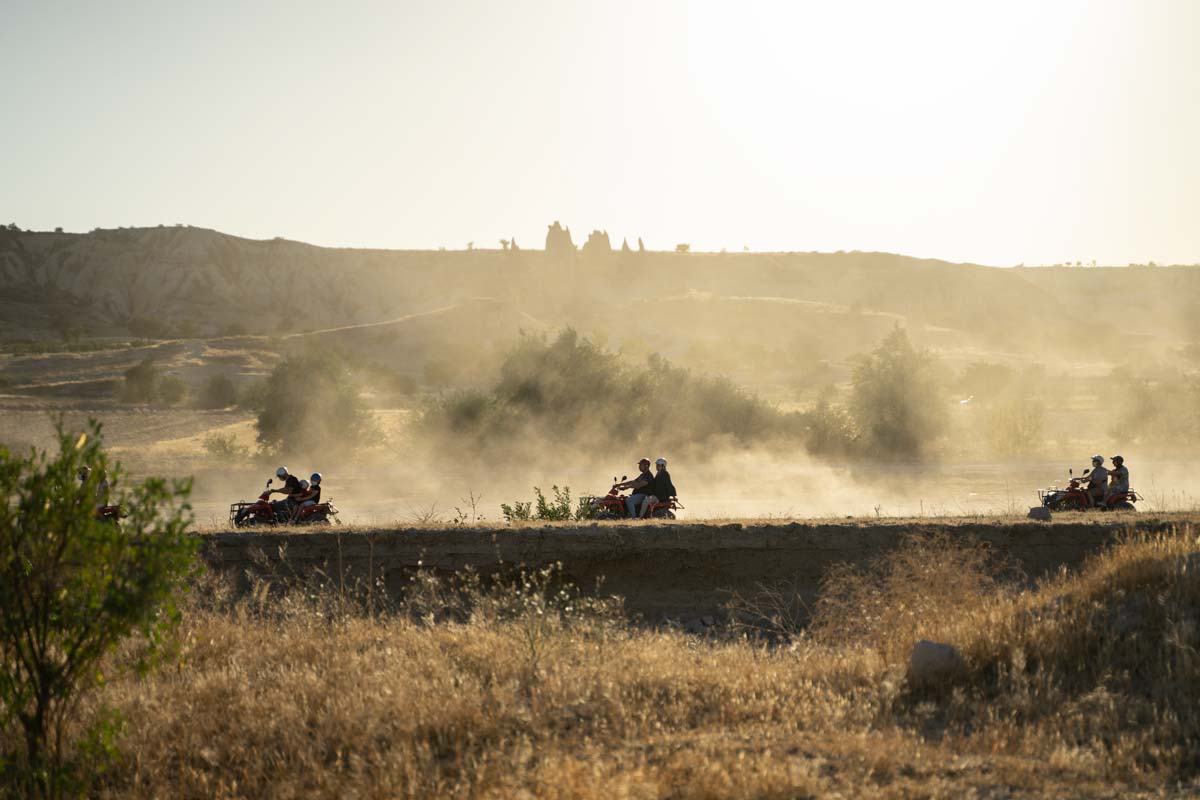
Another way to explore Cappadocia is by ATV, which has become synonymous of this region. Due to its breathtaking landscapes, diverse terrain, and unique geological features, ATVs provide the most effective method for exploring the region at high speed.
ATV tours have been providing a fun and exhilarating option for getting around the region for decades, allowing riders to navigate rugged paths and access remote areas that are often difficult to reach on foot.
Most tours take you through valleys like Love Valley, Rose Valley, and Red Valley, where you can observe the striking rock formations and even visit ancient cave dwellings and historic sites.
Cappadocia Facts FAQs
What Food Is Cappadocia Known For?
Cappadocia is known for testi kebab, or clay pot kebab in English. It is a type of slow-cooked meat dish that is cooked in a sealed clay pot over an open fire. The traditional way to cook testi kebab is to bury the clay pot in hot coals, which allows it to cook slowly and evenly.
What Is Cappadocia Famous For Producing?
Cappadocia is known for producing high-quality grapes and wine. In the town of Avanos, pottery made using clay from the Red River is famous.
How old is Cappadocia?
It’s believed that Cappadocia is about 60 million years old, with the oldest human settlements discovered to date back to the Paleolithic era. Most of the history discovered in Cappadocia by human civilizations date back to the 6th Century BCE though.
Final Thoughts
As you can see, there are plenty of things Cappadocia is famous for, and that goes beyond the world-famous hot air balloons. The region is incredibly historic with thousands of years of history.
From its otherworldly landscapes to centuries-old history to its culinary delights, there are plenty of things that make this region unique and charming.
Overall, Cappadocia’s blend of natural beauty, historical significance, and unique activities make it a fascinating destination for travelers seeking adventure and culture. We hope this guide helped you learn a few facts about Cappadocia and understood what makes it unique.

